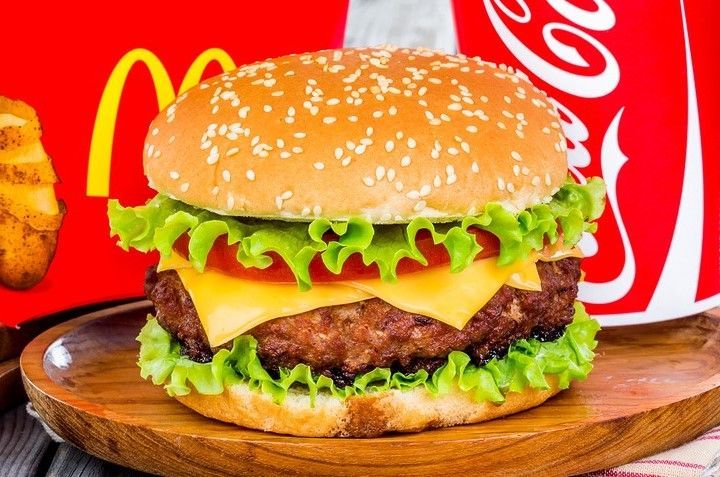The One Problem Even the Best Marketing Strategy Can’t Overcome, Part 2

About six months ago, I discussed how McDonald’s was a prime example of a company that was expecting marketing to come in on a white horse and reverse eroding sales and public perception.
One problem with that approach. While marketing can indeed boost sales and shape perceptions, it can’t fix a bad product.
I opined that the core problem was crappy burgers.
This was based on my own experience, although I stopped eating at McDonald’s several years ago, and reinforced by a Consumer Reports survey that found Mickey D’s burgers to be the worst-tasting burgers among all major American burger chains.
This was a business problem, not a marketing problem, and McDonald’s was doing nothing to fix it.
Fast forward to today. Has anything changed?
Well, McDonald’s replaced its CEO on March 1. Earlier this week, the new honcho announced some changes.
McDonald’s would be restructuring its operations and franchising more of its restaurants. This is code for cost-cutting.
If you want to find ways to operate more efficiently, that’s great, but cost-cutting is rarely part of a successful formula for saving a company in decline.
How about investing in better burgers and building a marketing strategy around that?
Fortunately, the CEO did seem to recognize the widely held belief that McDonald’s food isn’t winning many taste tests.
On one hand, he said the menu is too complex. On the other hand, he said to expect to see new menu items like the recently introduced sirloin burger.
Let me get this straight. If I want a burger that tastes really good, I have to order a specialty burger?
How about doing something to boost the quality of all burgers – the core product on your menu? The “hamburger” that rests beneath the golden arches on your signs?
Here are some other things the new CEO said will help turn around the fortunes of McDonald’s.
- They’re testing beef and chicken sandwiches with guacamole and jalapeno flavors. You know, because that’s what people want from McDonald’s.
- They’re testing a “build-your-own-sandwich” offering with various patties, flavors and rolls. You know, because people who go to McDonald’s have that kind of time.
- They’re testing mobile ordering and delivery.
- They introduced a takeout bag that transforms into an earth-friendly food tray.
All snark aside, these aren’t bad ideas. They could potentially enhance the customer experience – if the core product is up to snuff.
But McDonald’s burgers don’t taste good, and these plans do nothing to change that.
I don’t want to build my own sandwich if the stuff I’m using to build it doesn’t taste good. I’m not going to eat a crappy burger just because I can order it on my smartphone, have it delivered, or use a cool takeout bag.
It sounds like McDonald’s is trying to create some fancy window dressing, but the foundation is still shaky at best.
And without a solid foundation of tasty burgers, there’s no hope of reversing the steady decline of one of the world’s most powerful brands.
Take a look at Chipotle, an increasingly popular – and profitable – alternative to McDonald’s. A company that McDonald’s once owned, by the way.
Chipotle has a small menu with a total of 68 ingredients. Not 68 menu items. 68 ingredients.
But it invests in quality ingredients, the preparation of those ingredients, and the people who prepare them.
While McDonald’s is talking about adding guacamole and jalapeno, Chipotle is announcing that it’s going GMO-free. Not because of any new regulations, but because it’s the right thing to do.
Which decision do you think will have a bigger impact on the sales and perceptions of the two companies?
For the record, I’ve never eaten at Chipotle. But the numbers don’t lie.
Chipotle’s revenue for first quarter 2015 jumped more than 20 percent over the previous year, while McDonald’s is closing at least 700 stores in 2015.
When sales drop and public perceptions begin to turn negative, examine your product and how you do business first.
It’s easy to look for a scapegoat of the moment when things go south. Poor leadership. Bad weather. A lousy marketing strategy.
These could very well be legitimate reasons that affect the success of a business. But don’t assume your product is beyond reproach.
Does the model that worked 20, 10 or even five years ago meet the needs of today’s customer? Have their needs, priorities and expectations changed?
If so, have you adapted your business model to deliver a product and experience that satisfy those needs, priorities and expectations?
When you fail to evolve with your customers, you end up failing your customers.
McDonald’s seems to have ignored the fact that customers can get tastier, healthier burgers and other fast food from competitors.
That doesn’t mean you should suddenly start selling what your competition is selling and copying what they do. One could argue that McDonald’s is trying to lure Chipotle customers with guacamole and jalapenos.
If anything, it makes more sense to scale back and focus on making your core product as strong as it can possibly be. In the case of McDonald’s, that would mean cutting the menu in half and focusing on making a better burger.
Once you’ve maximized the quality and value of your core product, you can work on other things that make the product more appealing – like specialized menu items, ordering options that are more personalized and convenient, and cool packaging.
You’ll get much more mileage out of your marketing investments, and any investment into improving the customer experience, when you’ve already invested in your product.
As for McDonald’s, they continue to work backwards, trying to cover up the deficiencies in their core product with fancy window dressing.
As if people are stupid enough to think the burger in the advertising photo above even remotely resembles the one on their tray.
In appearance or taste.

